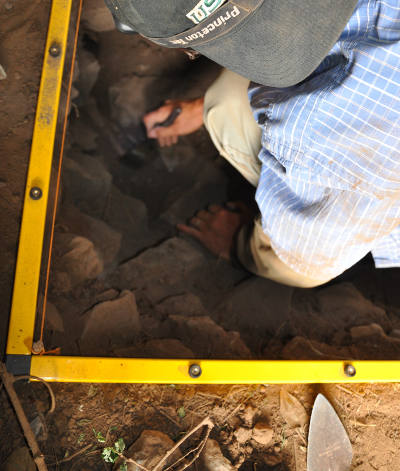Using AI to control energy for indoor agriculture
30 September 2024
Published online 12 October 2015
Scientists discover full extent of Back-to-Africa gene flow.

© John Arthur
The spread of ancient humans from Africa wasn't a one-way flow. As in most migrations, there was an element of return, including some backflow from Western Eurasia around 3,000 years ago.
Estimating the extent of the backflow has been difficult, since bones recovered from African sites haven't yielded much DNA. However, a new technique developed by Ron Pinhasi of University College Dublin can recover hundreds of times more DNA from the inner ear bones.
Using the new technique, Pinhasi's team worked with archaeologists to extract and sequence DNA from 4,500-year-old remains from Mota Cave in southern Ethiopia. Their analysis revealed that the genomes of all contemporary African populations have a significant component from incoming Eurasian Neolithic farmers which arrived during the backflow.
The team also showed that the Eurasian backflow spread further than believed, as far as Western and Southern Africa, 5,000 years after agriculture reached Europe.
“The genomic impact of this backflow on all modern African populations has been underestimated. Any future analyses on Out of Africa genomics should take this into consideration, and preferably also use the Mota genome as the 'reference' ancient African genome,” says Pinhasi.
doi:10.1038/nmiddleeast.2015.183
Llorente, M. G et al. Ancient Ethiopian genome reveals extensive Eurasian admixture throughout the African continent. Science http://dx.doi.org/10.1126/science.aad2879 (2015).
Stay connected: